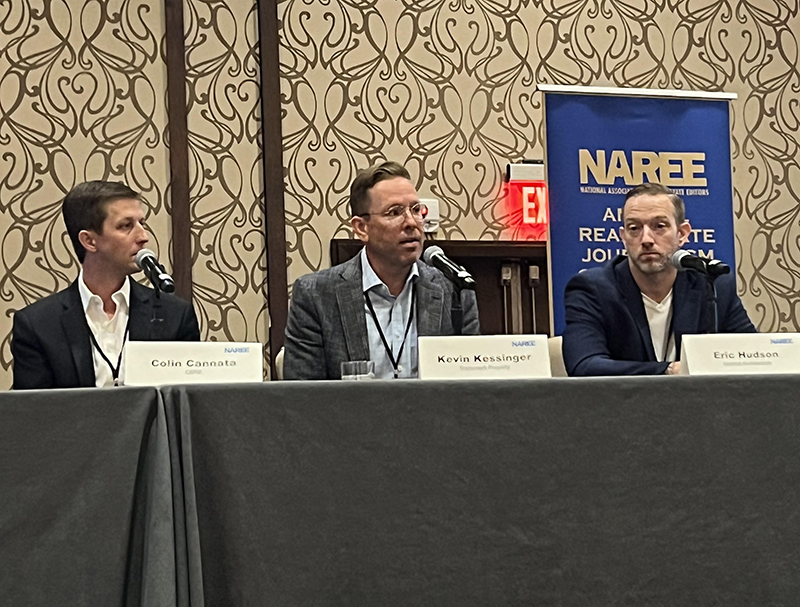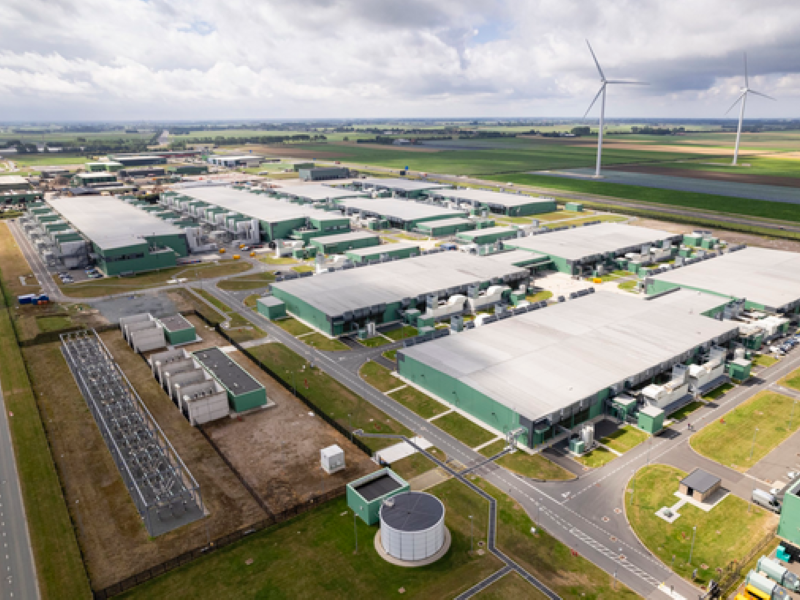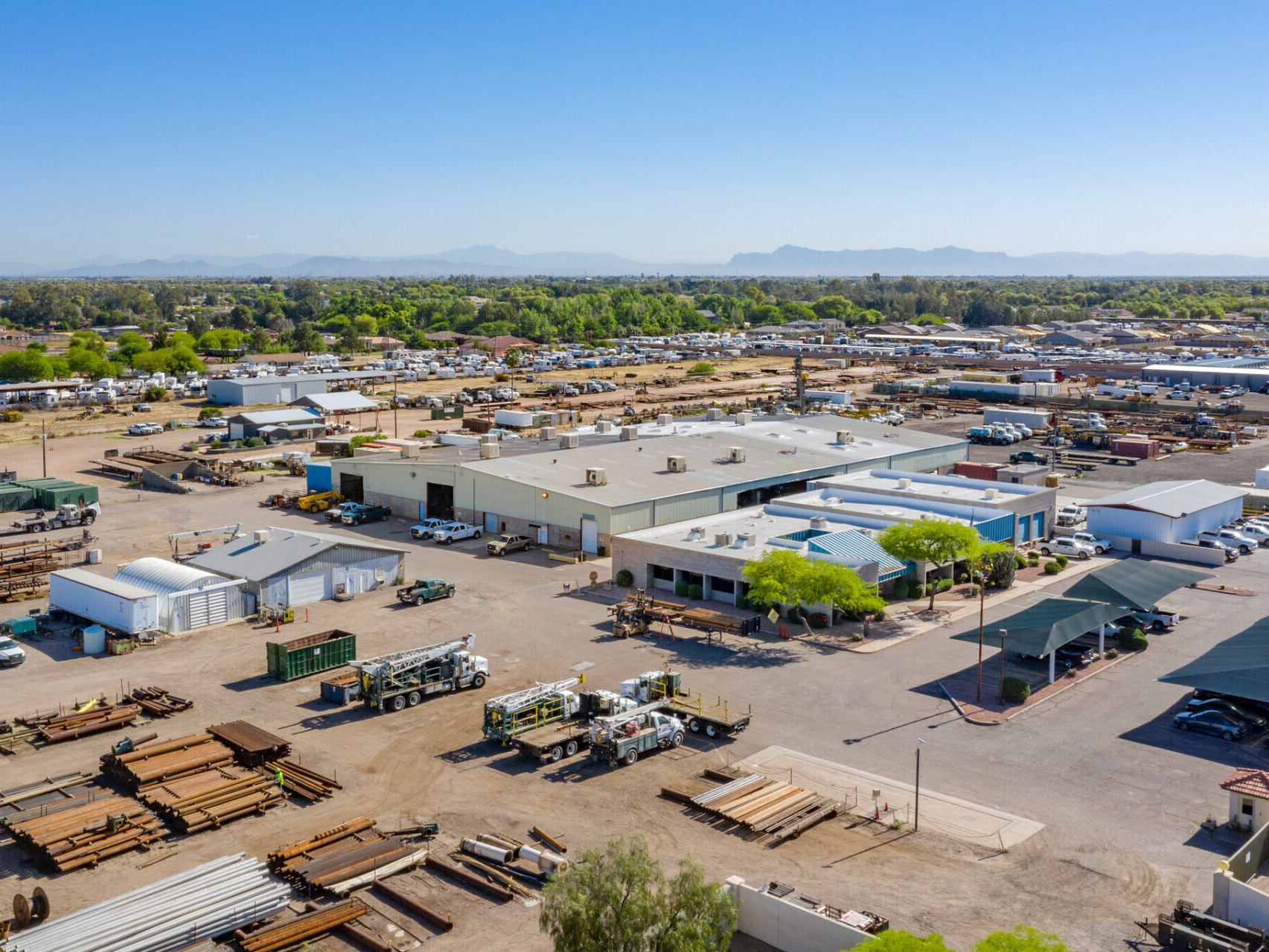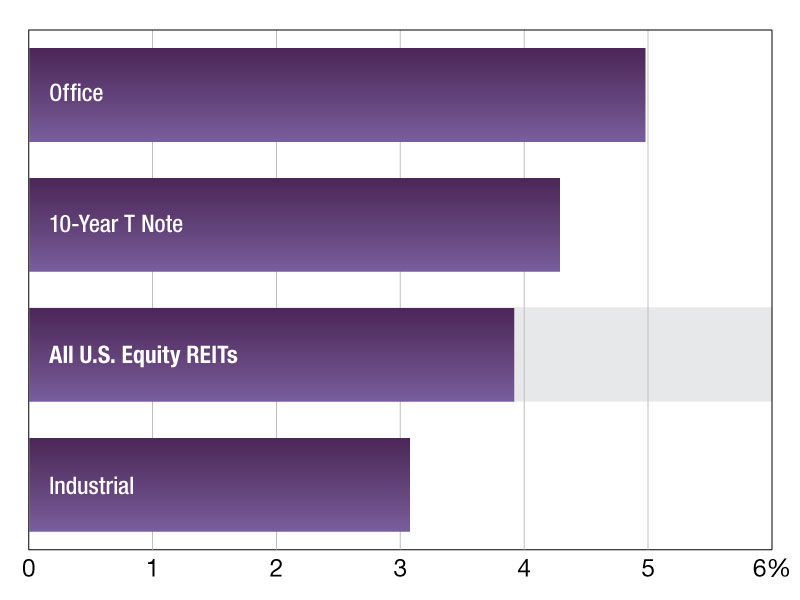NAREE Special Report: Why Conversion Isn’t CRE’s Magic Bullet
Changing workplaces to apartments is a long shot, but how about living at the mall?

Office to residential conversion occupies a lot of headlines today, and some developers have successfully embarked on these projects. In one of the larger examples, 160 Water Street, a 525,000-square-foot former office property in downtown Manhattan, is being transformed by the Vanbarton Group into Pearl Street Apartments, a 588-unit residential community.
But with so many cyclical and structural challenges facing these redevelopments, most will probably never happen. That was the consensus of a panel of experts at the National Association of Real Estate Editors conference in Austin, Texas, on June 19.
“What we’re finding today is, pretty much, it doesn’t work,” TCA Architects Founder Thomas Cox told the journalists and publicists gathered. “It doesn’t work because of construction costs, because of interest rates, obviously. We have probably looked at a dozen conversions in the last year. And I would say, at this point likely, none of them are going to go forward.”
READ ALSO: How Malls Are Adapting to 21st Century Needs
In addition to rising construction costs and interest rates, Cox said, many of these office properties are still significantly occupied. In successful conversions that TCA worked on years ago, the properties were completely vacant and abandoned or they were historic adaptive reuses. CBRE Executive Vice President Colin Cannata agreed that it is difficult to “make the numbers work.” For an assignment in Austin, CBRE has walked four or five potential investor groups through a 1980s vintage office building, and each has decided that demolition—vs. re-tenanting or converting—would be the best approach.
“The demo cost will be double digits in the millions, but it just made significantly more sense to take it down than to try to rehab the existing improvements,” Cannata said.
Eric Hudson, partner & principal, of Method Architecture has also reviewed potential conversions and found few candidates. “Most of the buildings had too deep of a floorplate so you don’t have enough natural light going through it or it doesn’t have enough internal systems that you need—HVAC, plumbing, etc.—to really support residential,” he said.
If they don’t work today, moderator Jon Banister of Bisnow asked the panelists, could they work in the future when commercial real estate interest rates come down and construction costs moderate?
“Those two things really do have to change,” said Cox. “I think another thing that’s important is the cities have to have some kind of adaptive reuse ordinance that allows for the conversion of office to residential or bifurcate it and use 50 percent of the building as office and the top 50 percent as residential. We’ve done that as well.”
In that model, Cox said, the owner retains their tenants and moves them into the commercial portion of the buildings. There are separate elevators, separate amenities, sometimes separate lobbies and different programming for each.
The idea of “mixing different pieces,” said Eric Hudson, principal & partner of Method Architecture, could really make these projects work just as they have worked in other mixed-use developments that aren’t as vertical. There’s too much involved in completely transforming a tower to residential.
New life at the mall
The panelists then turned to the other potential conversion opportunity: turning vacant and under-tenanted malls and shopping centers into residential and other uses. Many of today’s aged malls could be torn down, Cox said, and replaced with parks and a number of mixed uses, including multifamily.
Those projects certainly make sense from a location standpoint, according to Kevin Kessinger, president & COO of Trademark Property Co., which has undertaken a number of mall redevelopment projects. “There was a lot that already made sense about why a mall was built where it was, but then you have primary deterrents,” he said.
First, ownership can be an issue. “Institutional ownership has investment theses based on yield or certain IRR and really isn’t contemplating what goes into a major redevelopment,” he noted.
The other hurdle is control. If a mall is still 50 percent occupied by a legacy department store, that retailer will have so much say over the site and that could make repurposing it difficult.
“You really have to find the rare property where you have cooperative retailers that want to see the benefits that come from adding other uses, in particular multifamily uses where we’re bringing shoppers directly to their front door, and a capital and ownership that is going to make that different type of investment,” Kessinger said.
Trademark announced this week that Netflix will open a 100,000-square-foot-plus experiential retail space based on their programming in a former anchor department store. The mall is owned by MetLife and managed by Trademark.
But in today’s constrained financial environment, it is difficult to bear the extra expense of converting retail properties into multifamily or other uses and still make an acceptable return. “Someone has to want to turn this site into something else for the extra effort it is going to take,” said Hudson.
With all this talk of conversion, Hudson said, many of his clients are thinking flexibly about new project designs and asking for something that could be turned into something else when the current use no longer works. “We need to make decisions now that can help in the future so we’re not tearing down towers that don’t work for residential,” he said.







You must be logged in to post a comment.